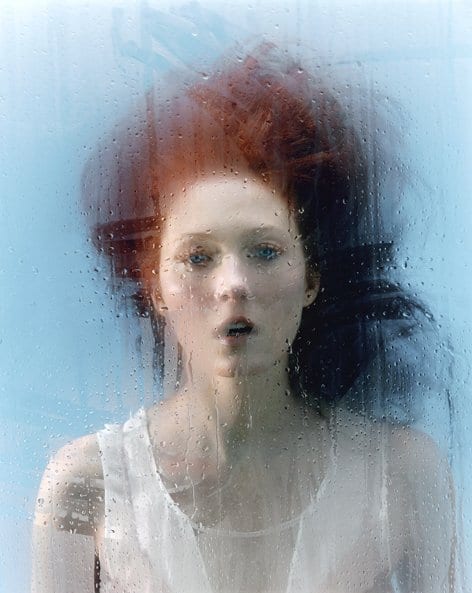SPRING 2019
ARS402
Richard Mai
2/23/19
Shift of The Sound
INTRODUCTION TO YOUR WORK:
Richard Mai is a photographer seeking to examine and question the line between reality and the surreal. His photos combine elements of portraiture and architectural photography in order to vividly index a feeling or gesture. He also is interested in cinematography, and the “creation” of images from the apparent world. After graduating high school, he worked as Nature Director for the Suffolk County Boy Scouts of America (SCCBSA). There, at Baiting Hollow Scout Camp (Calverton, NY) would he take a serious role in ecological study, preservation and conservation. Cabin living on DEC (Department of Ecology & Conservation) land changed how he saw his relationship with nature, and how currently we are living in a period of ecological deterioration. The landscape photos he took over these summers would lead him to further investigate the cause of this devastation. In his latest work, Shift of The Sound, he will explore a subgroup of the causes and effects of water pollution on Long Island.
SYNOPSIS OF PROPOSED WORK / PROJECT DESCRIPTION:
This project will try and explore the effects of water pollution in the Long Island Sound on the surrounding plants and wildlife. Several species of animal such as the Piping Plover and the Eastern Box Turtle are endangered due to the deteriorating quality of the places they live. Some factories pollute Nitrogenous waste into the Sound, and over time the ecosystems of Northeastern LI are shifted and tampered with. Also, the underground aquifers that supply most of our drinking water are increasingly becoming ridden with nitrogenous waste from septic systems and the use of fertilizer.
Other sources of groundwater are prone to contamination from gasoline and chemical spills. Hypoxia is (low dissolved oxygen level from sewage and agricultural activities containing nitrogen). The aesthetic environments filled with happy animals are beginning to worsen. The oyster and clam market of the Great South Bay has been declining over the past few years due to pollution. Over time, with an increase in population along the South Shore, the fresh water flowing into the bay was diverted for household and agricultural use. The volume of untreated polluted water from villages and industry and runoff from agricultural land increased. Rapid population growth in Nassau County changed the ecology of the western basin. Salt water marshes have been destroyed, channels were deepened for yachts, and sewage treatment plants were built. Through a series of videos and photos this film will seek to reflect on the Earth and its complex ecosystems. Through the intervention of humans, these dynamic systems shift in a very chaotic way.
RESEARCH OUTCOMES / ARTWORKS:
-Several 5 x 7 Color Prints (Canon Pro 100mkii)
-Several 8×10 BW Darkroom Enlargements
-Several High Resolution Scans of Film Negatives (TIFF / At least 20MP)
– ~15 min of usable color corrected documentary footage of landscape and animals (to be edited down)
PRODUCTION METHODS, MATERIALS, PROCESSES, EQUIPMENT:
Displayed on Projection Screen (~100in)
2.1 Surround Sound Audio Speakers
-Panasonic Lumix GH5
– Record in 4K with Hybrid Log Gamma/Cine Profiles (80% of footage)
– Slow Motion 120FPS 1080p (20% of footage)
– All-Intra 400 Mbps Codec
– 10 bit 4:2:2 Internal Recording
-Sigma 18-35mm f1.8
-Viltrox Micro 4/3 to Canon EF Mount (w/ optical element)
-Sandisk Extreme Pro 62GB Card (>300MB/s Write)
-85mm Cine Lens (Loan)
-Rode VideoMicro Microphone
-Shure Beta 87A Condenser Microphone
-RedRock Micro Shoulder Grip
-DFocus Follow Focus
-Zoom H1n Handy Recorder (Loan)
-iPhone X
-Zhiyun Gimbal
-BW Polarizer Filter
-ND 0.9 (or higher) Filter (Loan)
-Tripod
-Camera Slider
-MacBook Pro
-Canon AE1 Program Film Camera
-Canon 24-35mm f4L
-Mamiya RZ67 Medium Format Body
-Mamiya Sekkor 135mm f 3.5 Lens
-Mamiya Sekkor 50mm f 4 Lens
-Canon Pro 100mkii (Will print at home)
-Epson Perfection V550 Scanner
-ILFORD Fiber Photo Paper (11” x 17”)
Edit in Final Cut Pro X
Color Correction in Davinci Resolve
*Will need access to Darkroom to make BW Enlargements (1 – 2 week(s) after spring break)
Narration Recording in Home Studio
TIME SCHEDULE:
March 01 – 06: Pre Production I: Research in Library
March 18 – 20: Filming on Location
March 20 – 23: Post Production I (Color Correction)
March 24 – 30: Post Production II (Editing and Photo Enlargements)
REFERENCES:
https://www.newsday.com/long-island/li-s-environmental-concerns-where-do-we-go-from-here-1.2092883
http://www.issues.longislandindex.org/#environment
https://www.huffingtonpost.com/marshall-brown/can-long-island-be-saved_b_5274605.html
RESEARCH JOURNAL, SKETCHES AND SUPPORTING MATERIAL:
http://longislandsoundstudy.net/ – Long Island Sound Study
I will scan images from my research journal notebook (hard copy) that I will have for this project. This book will contain notes, drawings and ideas along this investigative process.
